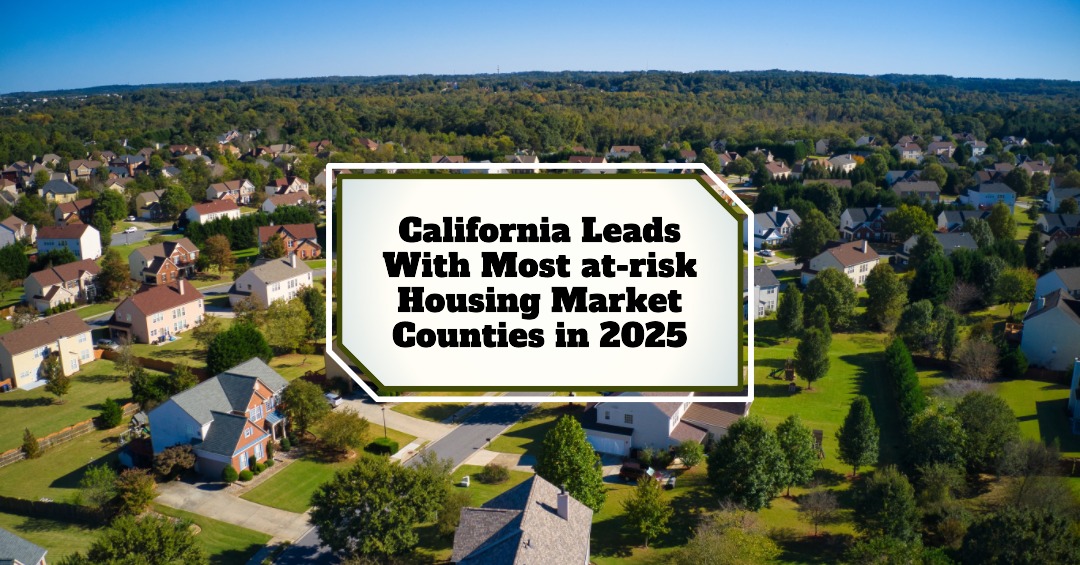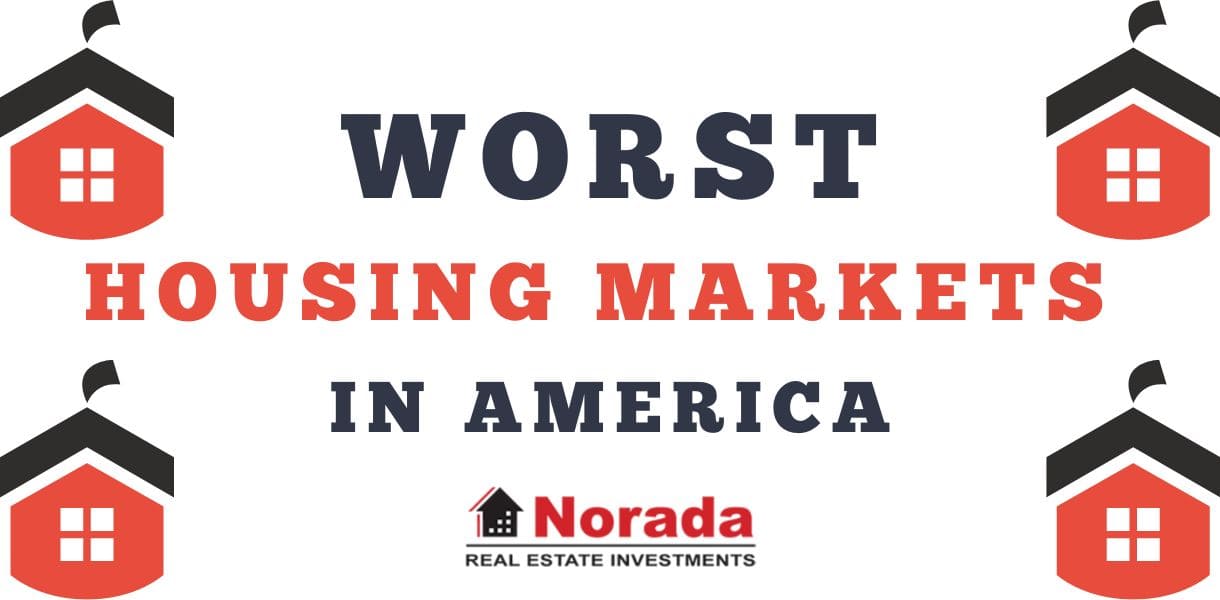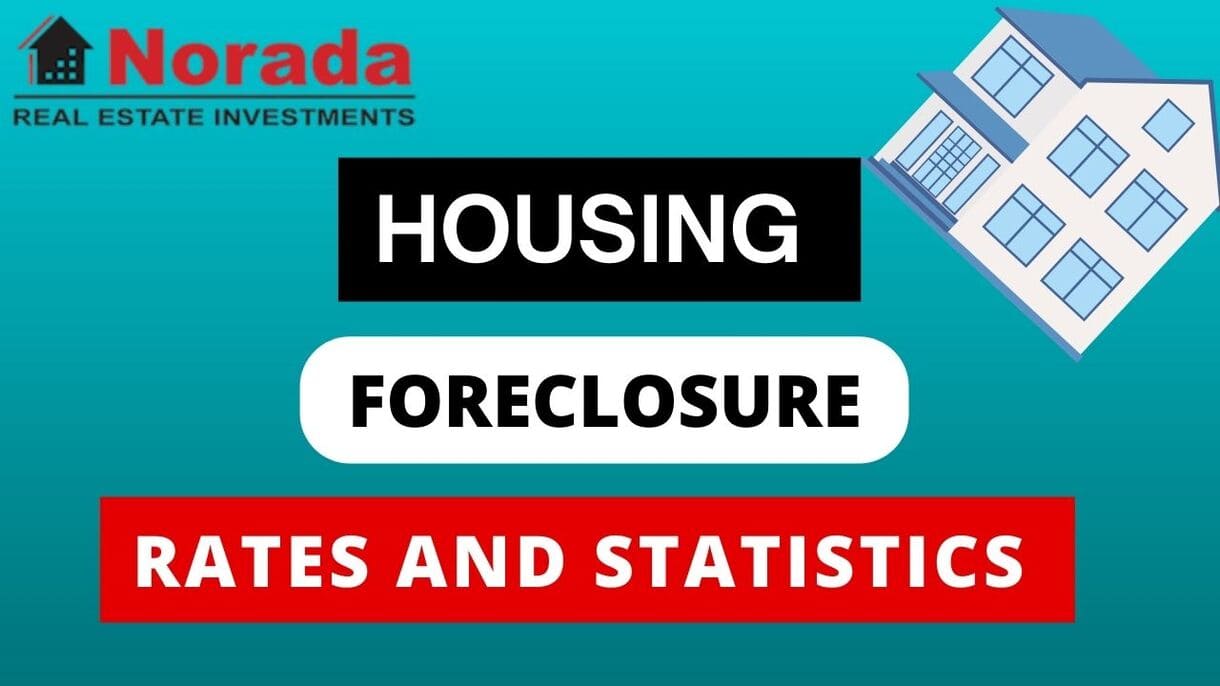California is home to the most counties facing housing market risks in the second quarter of 2025, with a significant number of its communities showing signs of stress. This finding, from ATTOM's latest Housing Risk Report, points to a broader trend of financial strain impacting homeowners across the nation, though the picture is far from uniform.
While California’s high home prices and associated costs contribute to its position at the top of the risk list, it’s crucial to understand that not all of the Golden State’s counties are equally vulnerable, and other regions are grappling with their own set of challenges.
California Leads With Most At-Risk Housing Market Counties, But the Story is More Complicated
When I first look at reports like these, I often see California highlighted for its expensive housing. And yes, that’s absolutely a piece of the puzzle. But as someone who’s followed real estate for a while, I know it’s rarely just one thing. ATTOM's report gives us a multi-faceted view, looking beyond just list prices to consider affordability, folks being “underwater” on their mortgages (meaning they owe more than the house is worth), foreclosure rates, and unemployment figures. It’s this combination of factors that really tells the story of which markets are truly feeling the pressure.
What Makes a Housing Market “At-Risk”?
ATTOM's analysis zeroes in on four key indicators to determine a county's housing market risk level:
- Home Affordability: This isn't just about the sticker price of a house. It's about how much of your annual income you need to set aside for mortgage payments, property taxes, insurance, and other homeownership costs. If this percentage climbs too high, it means a larger chunk of people’s paychecks are tied up in their homes, leaving less room for other expenses or unexpected emergencies.
- Seriously Underwater Mortgages: This refers to homeowners who owe at least 25% more on their mortgage than their home is currently worth. This is a precarious position; if they need to sell, they’d have to bring a significant amount of cash to the closing table just to pay off the loan, and they wouldn't be able to refinance easily.
- Foreclosure Rates: A higher percentage of homes facing foreclosure signals that people are struggling to keep up with their mortgage payments. This can be due to job loss, medical emergencies, or simply incomes not keeping pace with rising costs.
- County Unemployment Rates: When people are out of work, they can’t pay their bills, including their mortgages. Higher unemployment often correlates with increased financial distress for homeowners.
California: The Top of the List
It’s no surprise to see California counties high on the list, and the report confirms this, with 14 counties identified as being among the riskiest. This high number reflects the persistent challenge of affordability that many Californians face. As ATTOM CEO Rob Barber noted, “This summer’s home prices were certainly eye-catching, but there are many factors that contribute to the health of a local housing market.” He’s right. When the median home price in a county requires a significant portion of a resident's salary to purchase and maintain, it creates a foundation of vulnerability.
For example, in Marin County, CA, home expenses consumed a staggering 119.7% of the typical resident’s annual wages. Similarly, Santa Cruz County, CA, saw expenses eating up 116.1% of wages, and San Luis Obispo County, CA, at 99.3%. These numbers are eye-opening. It implies that in these areas, not only are people dedicating their entire income to housing, but they might be falling short, potentially relying on savings or other income sources just to keep a roof over their heads. This isn't sustainable long-term and leaves little buffer for any economic shocks.
Beyond affordability, some California counties are also showing higher-than-average unemployment rates. Imperial County, CA, for instance, had an unemployment rate of 19%, a stark contrast to the national average. Tulare County, CA, and Merced County, CA, also show elevated unemployment at 10.8% and 10.5%, respectively. When jobs are scarce, the ability to pay mortgages and other living expenses dwindles, naturally increasing the risk of foreclosures and people falling behind.
It's Not Just California: Other Hotspots and Unexpected Trends
While California is prominent, ATTOM's report shows that the challenges are widespread and the South is also significantly represented among the riskiest markets. Fourteen of the 50 highest-risk markets are found in California, but Florida isn't far behind with seven counties, and New Jersey shows five. This tells me that the economic pressures affecting housing are not confined to one region.
Florida faces its own set of issues, with Charlotte County, FL, being named one of the five riskiest counties overall. This county, like others on the riskiest list, had unemployment rates above the national average and faced a foreclosure rate of about one in every 372 homes. That’s a pretty significant rate, indicating that a noticeable portion of homeowners there are in trouble.
What I find particularly interesting is how these risk factors play out differently across the country. For instance, while California struggles with extreme affordability issues, Louisiana stands out for its high rates of seriously underwater mortgages. Seven out of the ten counties with the highest underwater rates were in Louisiana. Rapides Parish, LA, for example, had 17.3% of its homes underwater, and Calcasieu Parish, LA, was not far behind at 16.9%. This means a substantial number of homeowners in these areas are in a negative equity position, making it very difficult for them to sell or refinance their homes.
What About the Safest Markets?
It’s always good to look at both sides of the coin. The report also highlights counties that are doing well, which can offer clues about what creates stability. The South and Northeast have the most counties listed as the least risky.
Counties like Chittenden County, VT, and Washington County, RI, show incredibly low rates of seriously underwater homes (0.5% and 0.7%, respectively) and very strong foreclosure rates (one in every 37,013 homes for Chittenden). Their unemployment rates are also remarkably low, like 2.3% for Chittenden County. These areas seem to have a good balance of stable employment, affordable housing relative to income, and homeowners who are generally in strong financial positions.
It’s worth noting that even in some of the least risky markets, the cost of housing can still be a challenge. For instance, in Chautauqua County, NY, buying and maintaining a home would require 17.8% of the typical resident's wages, which is still a significant portion, though far better than some of the California counties mentioned earlier. This highlights how, even in healthier markets, affordability remains a key consideration.
Unpacking the Data: My Perspective
As I review this data, a few things stand out to me. First, the combination of high home prices and relatively stagnant wage growth is creating a perfect storm for affordability issues. This isn’t just a California problem; it’s a national conversation. When the cost of basic shelter consumes such a large part of people's earnings, it suppresses other economic activity and increases individual financial fragility.
Secondly, the diversity of risk factors across different regions is fascinating. Louisiana's underwater mortgage issue is different from California's affordability crisis, yet both point to market vulnerabilities. Unemployment remains a critical bellwether. A strong job market is the bedrock of a healthy housing market. When that foundation cracks, the whole structure is at risk.
I also think about the impact of recent events, like wildfires in California, which the report briefly mentions. Natural disasters can have a devastating and lasting impact on local economies and property values, contributing to higher risk. This layered effect is something that needs to be considered when assessing the true health of a housing market.
The report’s methodology, combining affordability, equity, foreclosures, and unemployment, is what makes it so valuable. It moves beyond the headlines and provides a more comprehensive look at where homeowners might be struggling.
Ultimately, while “California Leads with Most At-Risk Housing Market Counties” is a significant headline, it’s a summary that needs further unpacking. The devil, as always, is in the details, and understanding the varying economic conditions and local dynamics within California and across the nation is key to grasping the full picture of housing market health in the second quarter of 2025.
“Invest in Real Estate in the Growing Markets”
Discover high-quality, ready-to-rent properties designed to deliver consistent returns.
Contact us today to expand your real estate portfolio with confidence.
HOT NEW LISTINGS JUST ADDED IN MULTIPLE MARKETS!
Contact our investment counselors (No Obligation):
(800) 611-3060
Related Articles:
- Home Prices Drop in 21 Counties in the California Housing Market
- California Housing Market Decline: Sales Drop for 4th Straight Month
- California Housing Affordability Drops in Q2 2025 Amid High Mortgage Rates
- Is the California Housing Market Heading for a Crash or Correction?
- California Housing Market: Forecast and Trends 2025-2026
- The Great Recession and California's Housing Market Crash: A Retrospective
- California Dominates Housing With 7 of Top 10 Priciest Markets
- Real Estate Forecast Next 5 Years California: Boom or Crash?
- Anaheim, California Joins Trillion-Dollar Club of Housing Markets
- California Housing Market: Nearly $174,000 Needed to Buy a Home
- Most Expensive Housing Markets in California
- Homes Under 50k in California: Where to Find Them?





